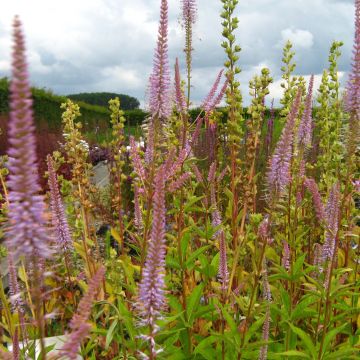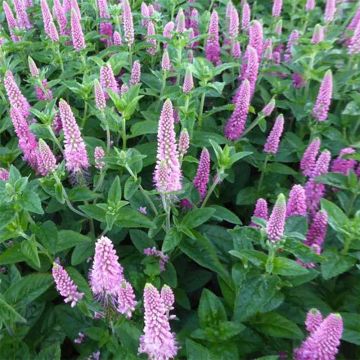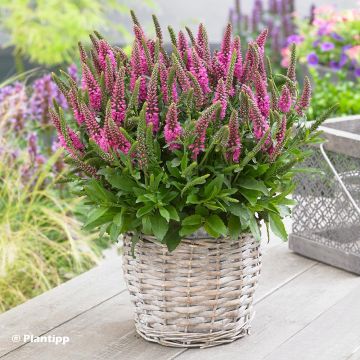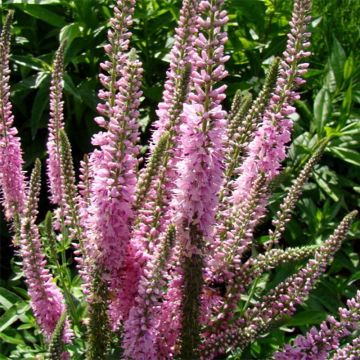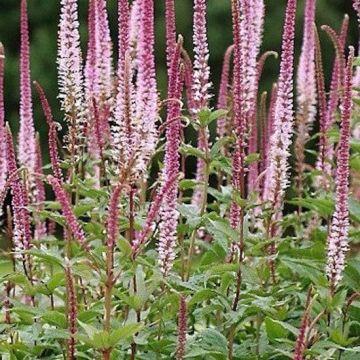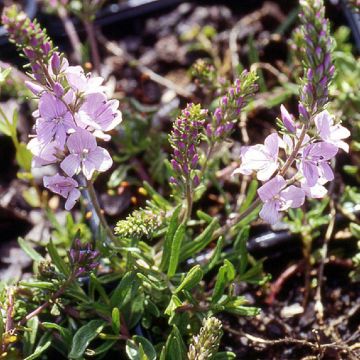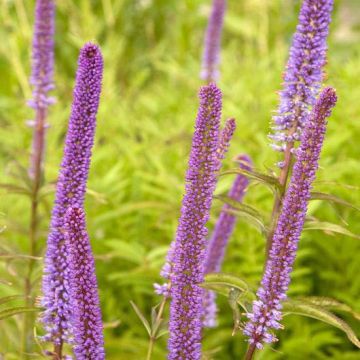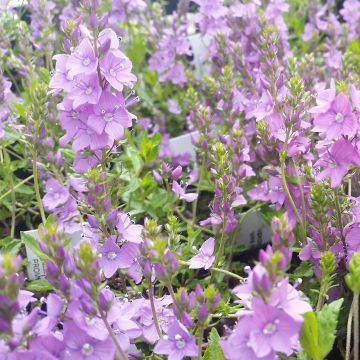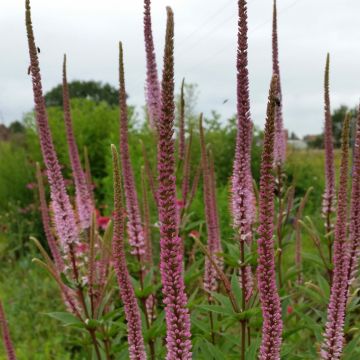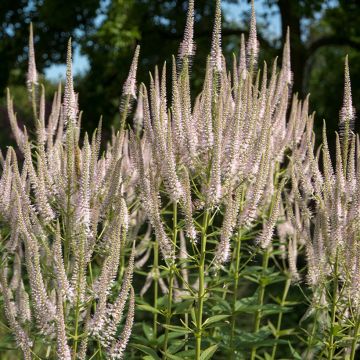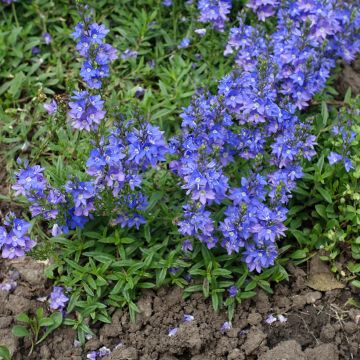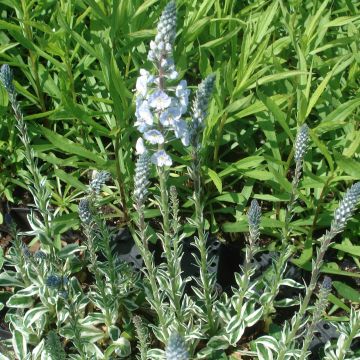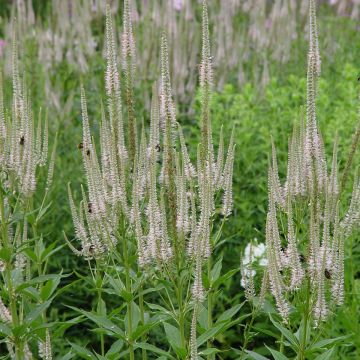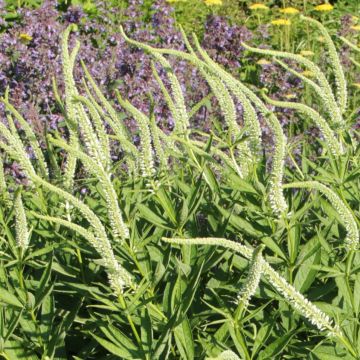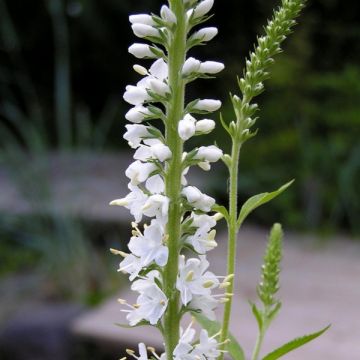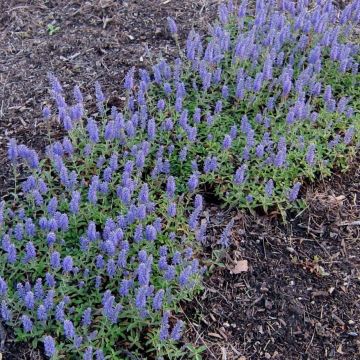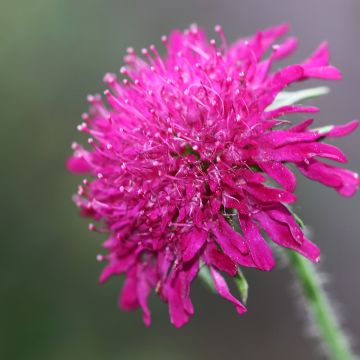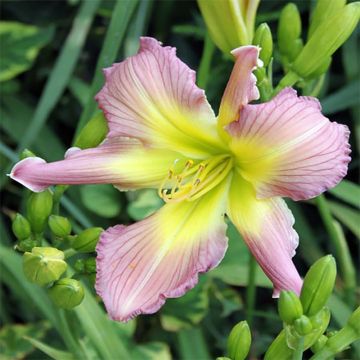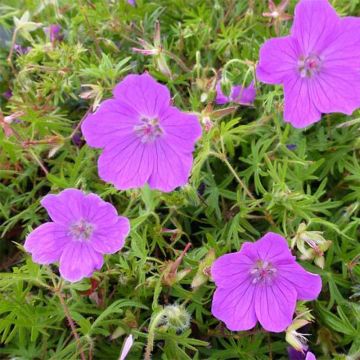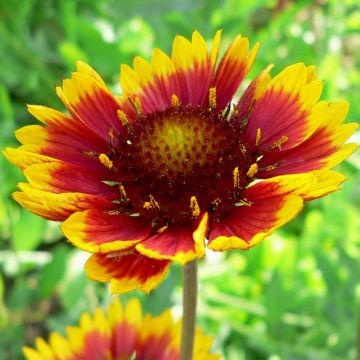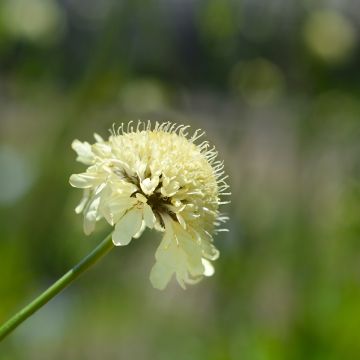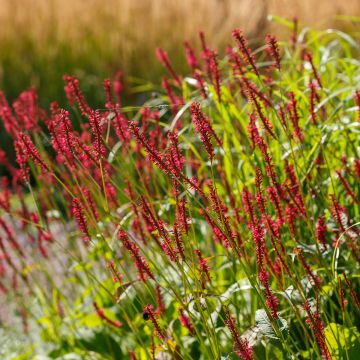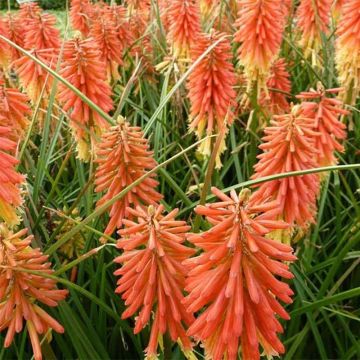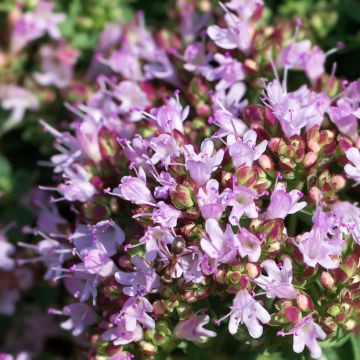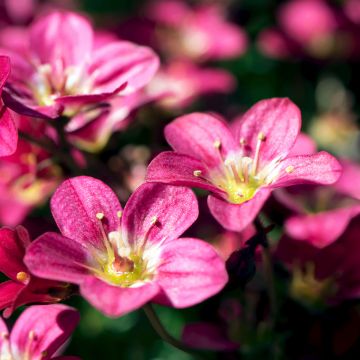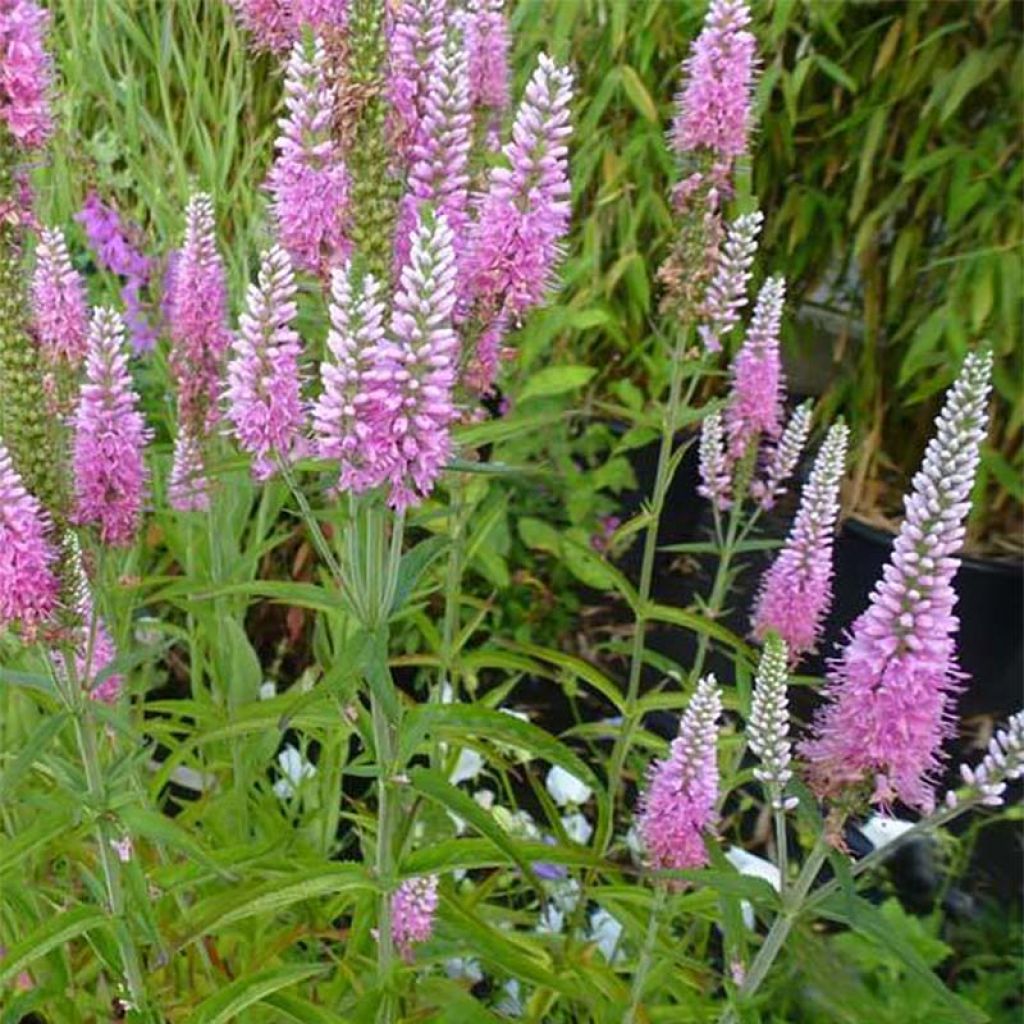

Veronica longifolia Candied Candle
Veronica longifolia Candied Candle
Veronica longifolia Candied Candle
Longleaf Speedwell, Garden Speedwell, Long-leaf Veronica
If this young plant Veronica is as beautiful as the ones ordered in 2017, it will be perfect, a plant that thrives very well in a rock garden near a pond where it appreciates the coolness.
Ghislaine B., 18/05/2018
Why not try an alternative variety in stock?
View all →This plant carries a 12 months recovery warranty
More information
We guarantee the quality of our plants for a full growing cycle, and will replace at our expense any plant that fails to recover under normal climatic and planting conditions.
From €5.90 for pickup delivery and €6.90 for home delivery
Express home delivery from €8.90.

Does this plant fit my garden?
Set up your Plantfit profile →
Description
Veronica longifolia 'Candied Candle' is a compact and late flowering variety of Long-leafed Speedwell. Its long spikes of densely packed tiny, intense purple-pink flowers, stand above abundant light green foliage. This pretty perennial forms a flowery mass, covered in butterflies in borders or at the edge of water features. It is very hardy and easy to grow in any deep and moist, good garden soil, in full sun or partial shade. Its flowers are perfect as cut flowers.
Veronica longifolia is a herbaceous plant of the plantain family, found in northern and central Europe as well as Asia. It forms quite large clumps, with erect stems, sometimes over 1 metre (3 feet) high in nature and readily hybridizes with Veronica spicata.
The 'Candied Candle' variety is much shorter, but also more floriferous and will reach about 40 to 45 cm (16 to 18in) high and 30 to 40 cm (12 to 16in) wide. Its leaves can be opposite, but are often whorled in groups of three or four. They are quite narrow and lanceolate, 6 to 12 cm (2 to 5in) long, with a short petiole, deeply toothed and bright light green. It flowers in August-September with very dense long narrow spikes of tightly packed, tiny, tubular, very dark pink flowers with a slightly violet hue, made up of four petals and two strikingly light protruding stamens. The nectar-rich flowers are followed by heart-shaped capsules.
This hardy Veronica is easy to grow in ordinary, moist soil and blends well with lots of plants to create magnificent summer compositions in borders, at the front of large beds, and on the edges of a pond. Plant it alongside Joe-Pye Weed, Sneezeweed, Lythrum salicaria, Filipendula rubra 'Venusta', and Marsh Spurge, for example. In a wilder style, at the back of a bed, this elegant perennial forms a very successful combination with shorter grasses: Carex, Festuca, stipa... Its flowers can be used to create beautiful bouquets, with white or red roses, hydrangeas, ranunculus or asters.
Report an error about the product description
Veronica longifolia Candied Candle in pictures
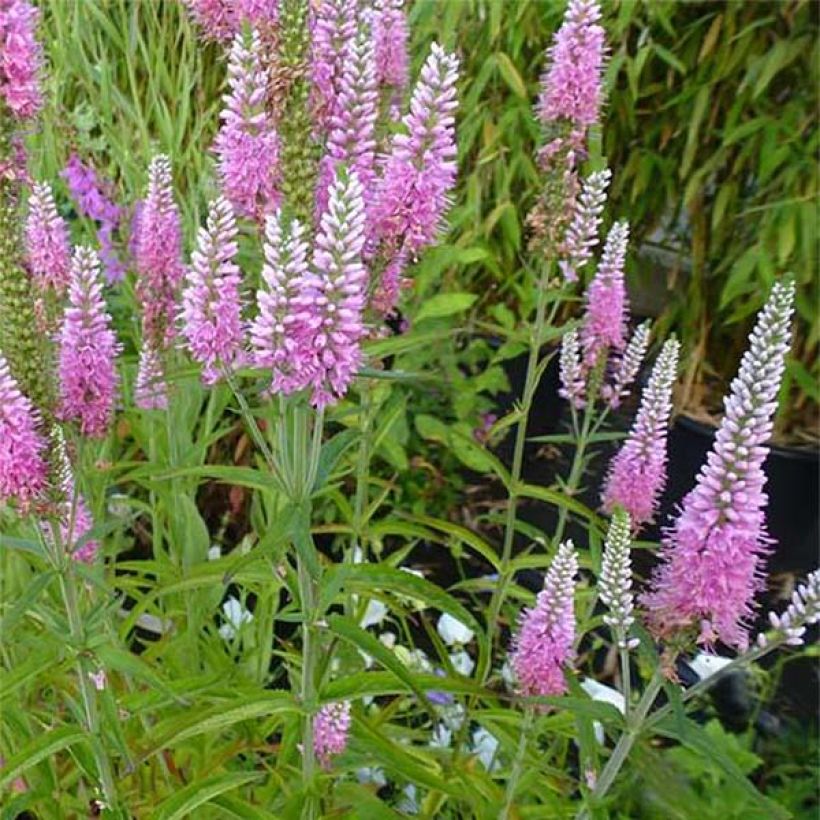

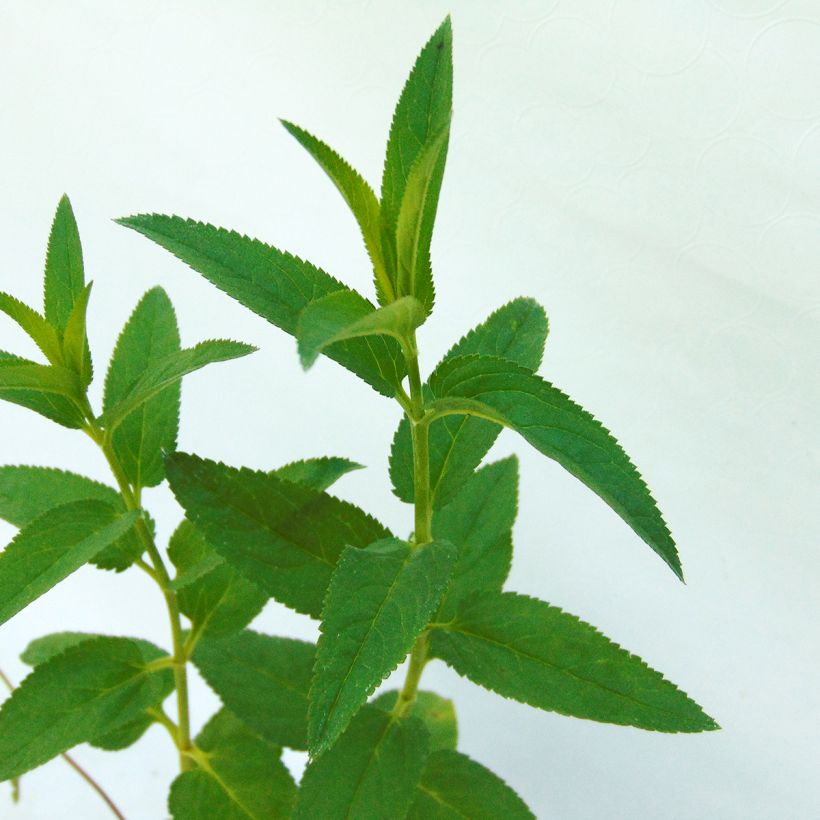

Flowering
Foliage
Plant habit
Botanical data
Veronica
longifolia
Candied Candle
Plantaginaceae
Longleaf Speedwell, Garden Speedwell, Long-leaf Veronica
Cultivar or hybrid
Other Veronica - Speedwell
Planting and care
Veronica longifolia is an easy-going perennial, it prefers rich and light, chalky soil. It likes a humid atmosphere, close to water, but needs light soil. It develops and flowers best in the sun. Veronica longifolia can be planted in the garden almost all year round, except during periods of frost and summer drought. Cut back the faded flower stalks to promote new flowers. Adding compost to the base of the plant every spring will give it vigour. Avoid using nitrogen-rich fertilisers, as they will weaken the vegetation and make its stems more prone to bending. In spring, cut the plant back to its base. Fresh foliage will emerge in spring.
Planting period
Intended location
Care
-
, onOrder confirmed
Reply from on Promesse de fleurs
Summer flowering perennials
Haven't found what you were looking for?
Hardiness is the lowest winter temperature a plant can endure without suffering serious damage or even dying. However, hardiness is affected by location (a sheltered area, such as a patio), protection (winter cover) and soil type (hardiness is improved by well-drained soil).

Photo Sharing Terms & Conditions
In order to encourage gardeners to interact and share their experiences, Promesse de fleurs offers various media enabling content to be uploaded onto its Site - in particular via the ‘Photo sharing’ module.
The User agrees to refrain from:
- Posting any content that is illegal, prejudicial, insulting, racist, inciteful to hatred, revisionist, contrary to public decency, that infringes on privacy or on the privacy rights of third parties, in particular the publicity rights of persons and goods, intellectual property rights, or the right to privacy.
- Submitting content on behalf of a third party;
- Impersonate the identity of a third party and/or publish any personal information about a third party;
In general, the User undertakes to refrain from any unethical behaviour.
All Content (in particular text, comments, files, images, photos, videos, creative works, etc.), which may be subject to property or intellectual property rights, image or other private rights, shall remain the property of the User, subject to the limited rights granted by the terms of the licence granted by Promesse de fleurs as stated below. Users are at liberty to publish or not to publish such Content on the Site, notably via the ‘Photo Sharing’ facility, and accept that this Content shall be made public and freely accessible, notably on the Internet.
Users further acknowledge, undertake to have ,and guarantee that they hold all necessary rights and permissions to publish such material on the Site, in particular with regard to the legislation in force pertaining to any privacy, property, intellectual property, image, or contractual rights, or rights of any other nature. By publishing such Content on the Site, Users acknowledge accepting full liability as publishers of the Content within the meaning of the law, and grant Promesse de fleurs, free of charge, an inclusive, worldwide licence for the said Content for the entire duration of its publication, including all reproduction, representation, up/downloading, displaying, performing, transmission, and storage rights.
Users also grant permission for their name to be linked to the Content and accept that this link may not always be made available.
By engaging in posting material, Users consent to their Content becoming automatically accessible on the Internet, in particular on other sites and/or blogs and/or web pages of the Promesse de fleurs site, including in particular social pages and the Promesse de fleurs catalogue.
Users may secure the removal of entrusted content free of charge by issuing a simple request via our contact form.
The flowering period indicated on our website applies to countries and regions located in USDA zone 8 (France, the United Kingdom, Ireland, the Netherlands, etc.)
It will vary according to where you live:
- In zones 9 to 10 (Italy, Spain, Greece, etc.), flowering will occur about 2 to 4 weeks earlier.
- In zones 6 to 7 (Germany, Poland, Slovenia, and lower mountainous regions), flowering will be delayed by 2 to 3 weeks.
- In zone 5 (Central Europe, Scandinavia), blooming will be delayed by 3 to 5 weeks.
In temperate climates, pruning of spring-flowering shrubs (forsythia, spireas, etc.) should be done just after flowering.
Pruning of summer-flowering shrubs (Indian Lilac, Perovskia, etc.) can be done in winter or spring.
In cold regions as well as with frost-sensitive plants, avoid pruning too early when severe frosts may still occur.
The planting period indicated on our website applies to countries and regions located in USDA zone 8 (France, United Kingdom, Ireland, Netherlands).
It will vary according to where you live:
- In Mediterranean zones (Marseille, Madrid, Milan, etc.), autumn and winter are the best planting periods.
- In continental zones (Strasbourg, Munich, Vienna, etc.), delay planting by 2 to 3 weeks in spring and bring it forward by 2 to 4 weeks in autumn.
- In mountainous regions (the Alps, Pyrenees, Carpathians, etc.), it is best to plant in late spring (May-June) or late summer (August-September).
The harvesting period indicated on our website applies to countries and regions in USDA zone 8 (France, England, Ireland, the Netherlands).
In colder areas (Scandinavia, Poland, Austria...) fruit and vegetable harvests are likely to be delayed by 3-4 weeks.
In warmer areas (Italy, Spain, Greece, etc.), harvesting will probably take place earlier, depending on weather conditions.
The sowing periods indicated on our website apply to countries and regions within USDA Zone 8 (France, UK, Ireland, Netherlands).
In colder areas (Scandinavia, Poland, Austria...), delay any outdoor sowing by 3-4 weeks, or sow under glass.
In warmer climes (Italy, Spain, Greece, etc.), bring outdoor sowing forward by a few weeks.


































